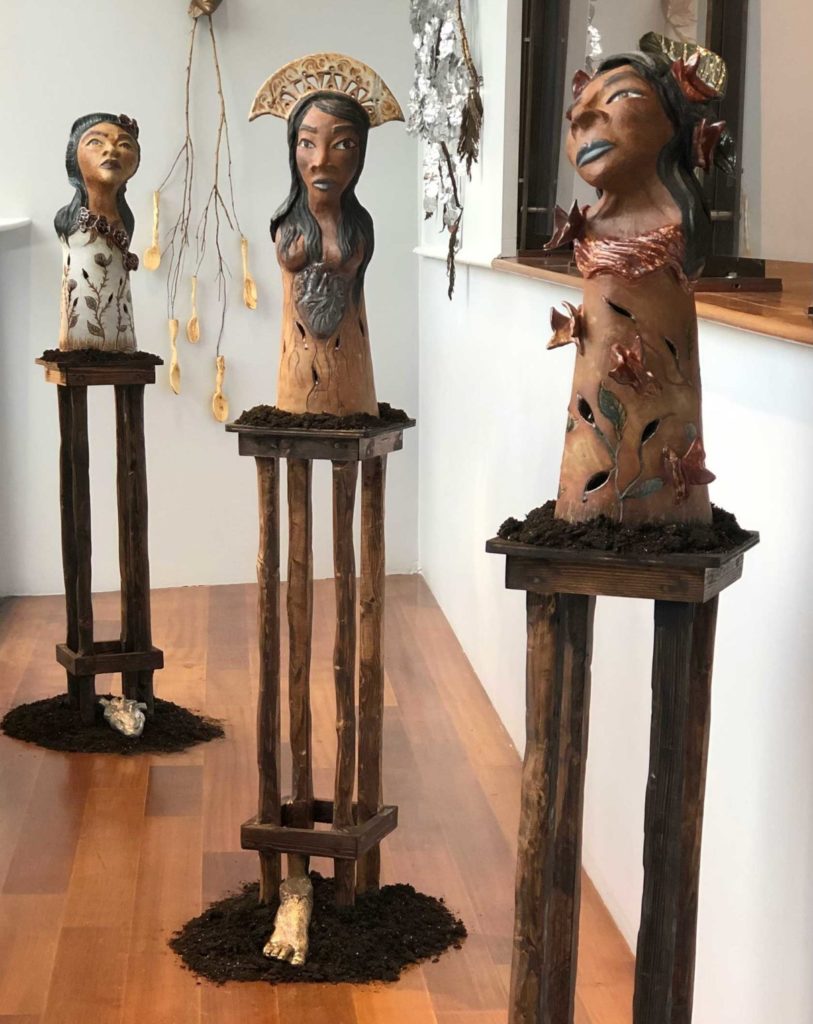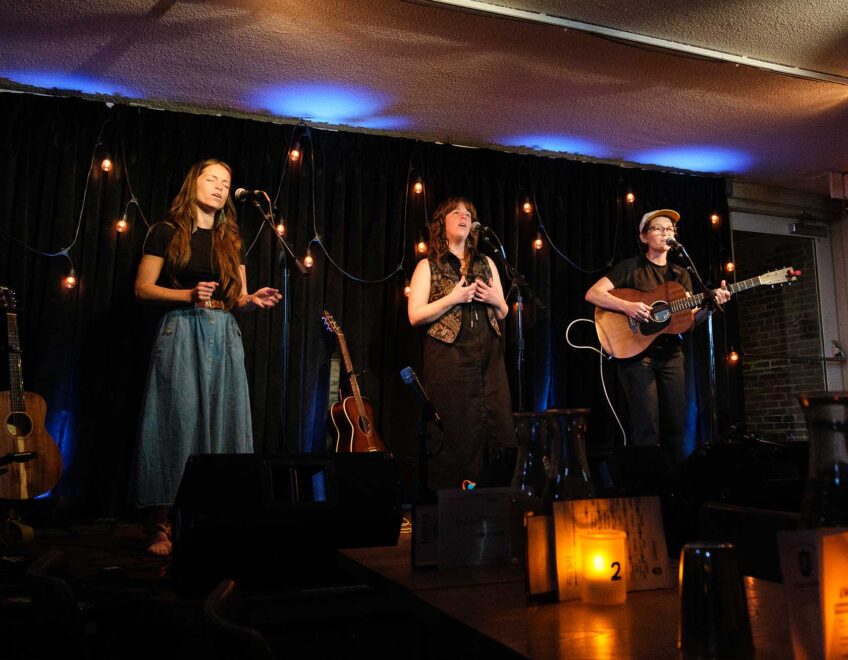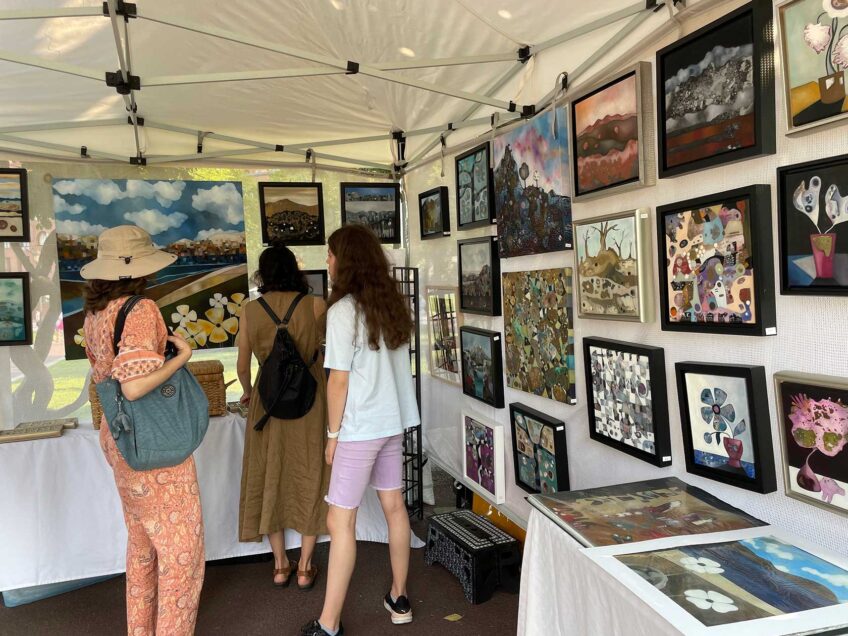Alejandra Cuadra Sanchez: Sculpting a sense of belonging
Artist explores cross-cultural identity in ‘Pasajes de Pertenecer’

Alejandra Cuadra Sanchez’s exhibition “Pasajes de Pertenecer” (Passages of Belonging) at Boston Sculptors Gallery probes what it means to be from a place and what we owe to the earth we live on. Born in Peru, Sanchez grew up on Cape Cod and is caught between two cultures, feeling not quite Peruvian and not quite American. In this show, running through Dec. 5, she finds harmony between her two identities.
“How do I redefine a way of belonging in between two places?” says Sanchez. “It goes back to honoring where I come from and where I’ve been and where I’ll be going — the places and the people and all the memories along the way.”
“Como canta los Ríos de la Luna” is a hanging sculpture crafted with aluminum from old beer cans, wire and uprooted roots she discovered on the shores of Cape Cod. Here she references her upbringing on the Cape, a place she feels a deep connection to, while also harkening back to her native Peru, where precious metals abound.
Sanchez says that her immigrant experience has taught her to use the materials she has to create her vision. The beer cans she shaped into shining medallions may not be Peruvian silver, but they carry the same emotional weight. She says, “There’s a lot to learn from materials, whether it be life lessons of perseverance or the need of discovery.”

“Como canta los Ríos de la Luna,”
Aluminum, Uprooted roots, wire, sentiments of belonging. PHOTO: COURTESY OF ALEJANDRA CUADRA SANCHEZ
Many of Sanchez’s artistic ruminations begin with Peruvian myths and stories she was told as a child. As these thoughts are shaped into larger art pieces, she draws further inspiration from studying texts like bell hooks’ “Belonging: A Culture of Place,” and Robin Wall Kimmerer’s “Braiding Sweetgrass.” The artist is an apprentice with Steve and Matt Kemp at Kemp Pottery in Orleans. She has found another deep relationship to her Peruvian heritage in working with clay. “Clay for me has a very strong connection,” she says. “I find so much joy in this material.”
“Pasajes de Pertenecer” is an intimate exhibition with just a few carefully chosen pieces of work, but each one requires intense reflection. What does it mean to belong to a place? How do we find identities in a cross-cultural world and how do we preserve the lands that fostered us? These are the questions Sanchez turns over like a warm piece of clay molded in her hands.
“For me what art is, is the ability to connect and to find hope. I think it does transcend borders in different ways,” says Sanchez. “I’m trying to learn what it means to be a human and also what it means to be a being on this earth.”








